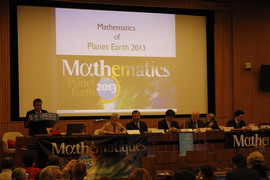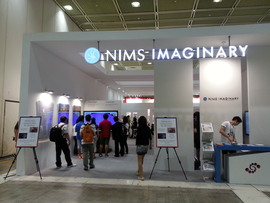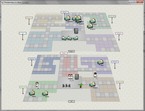The first MPE2013 exhibition featuring the winner modules of the MPE2013 competition held in collaboration with IMAGINARY takes place from March 5 – 8, 2013 at the UNESCO headquarters in Paris.
Dune Ash
program
Linux live-cd image with the installed 'dune-ash' simulation program,
alternative installation methods are availabel at
http://dune.mathematik.uni-freiburg.de/dune-ash/download.html
Credits
This application was developed mainly at the department of applied mathematics at the University of Freiburg. The first version was built in June/July 2011 for the Freiburg Science Fair. Between September and November of 2012 additional features were added for touchscreen support.
Website
Contributors
OrganisationProf. Dr. D. Kröner (AAM, University of Freiburg), OrganisationDr. M. Nolte (AAM, University of Freiburg), OrganisationTh. Strauch (AAM, University of Freiburg), OrganisationT. Malkmus (AAM, University of Freiburg)
ProgrammingDr. M. Nolte (AAM, University of Freiburg), ProgrammingDr. R. Klöfkorn (IMAGe / NCAR), ProgrammingD. Nies (AAM, University of Freiburg), ProgrammingJ. Gerstenberger (AAM, University of Freiburg), Programming T. Malkmus (AAM, University of Freiburg), ProgrammingA. Pfeiffer (AAM, University of Freiburg)
PicturesSan Jose (Wikimedia Commons), Pictures H. Thorburn (Wikimedia Commons), Pictures J. Gerstenberger (AAM, University of Freiburg)
Dune Ash is an interactive simulation of a volcano eruption in Europe. You can place a volcano, add a wind field and explore the ash cloud dispersing in time.
This application computes an approximate solution to the dispersion of volcano ash over Europe after an eruption. Input data are set interactively and results are computed instantaneously.
Numerical simulations are used in geophysical applications like weather forecast or in predicting the propagation of pollutants in the atmosphere. Mathematical models that describe these phenomena are usually expressed in terms of Partial Differential Equations (PDEs). Computing solutions to systems of PDEs is a challenging task.















